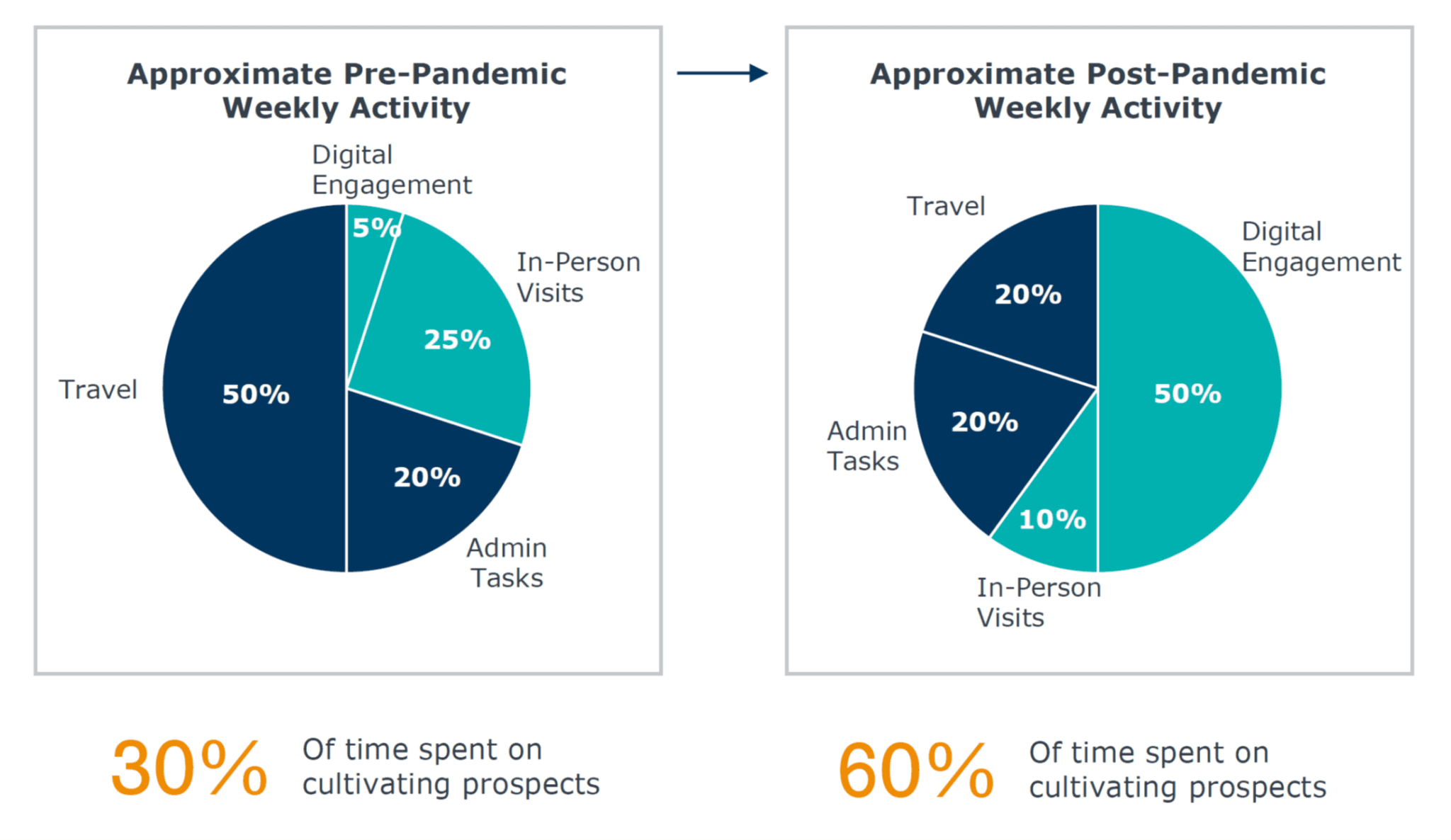Fundraising During Uncertain Times: What Not to Do
February 3, 2023
The first two decades of the 21st century have already witnessed several major disruptions with significant economic impacts, from three recessions to the pandemic to today’s hiring crisis. And with the threat of another recession looming, EAB has received requests for guidance on higher-education philanthropy amidst uncertain times. Below are four lessons learned from past crises that can help Advancement leaders plan for the coming year.
1. Don’t stop engaging prospects
During the pandemic and past disruptions, those partner institutions who chose to limit outreach to alumni/ae have consistently reported to EAB that they ultimately felt these decisions were mistakes due to the relationship-building time they lost as a result. Indeed, as a central pillar of sound pipeline development, engagement activities are irreplaceable, and donors’ comfort levels with virtual engagement, cultivation, and even solicitation have increased dramatically since 2020. Among EAB’s partner institutions, for example, click rates increased 61% on Giving Day solicitations from 2019 to 2020. Several colleges reported higher event attendance through virtual channels than they’d ever witnessed during prior “in-person only” times. Amidst uncertainty, it’s also critical to be able to show senior university leaders ROI numbers for all Advancement investments, including engagement activities.
To help prioritize the most productive events moving forward, use EAB’s Alumni Relations Program Review Toolkit, and to ensure that prospect engagement has the best chance of adding warm prospects to MGO portfolios, follow the steps in our Bridging the Gap from Events to Major Gifts Planner.
2. Don’t be afraid to keep asking
During times of disruption, chief advancement officers have commented on the great uncertainty—and even discomfort—of their gift officers when it comes to continuing cultivation and solicitation conversations. Understandably, fundraisers don’t want to seem tone-deaf to the possible financial hardships or fears of their constituents. Indeed, during the 2008-2009 recession, giving fell along with the economy, and it took three years for philanthropy to start growing again.
But there are also significant risks to halting solicitations altogether. A large private university reported to EAB that their donor counts in FY’20 had been closely tracking their 2019 numbers. However, when the university decided to stop all solicitations four months before the fiscal year end, their donor counts dropped so dramatically that they finished 2020 with 17% fewer donors for the year. On the other hand, our research showed that the remarkable revenue increases seen by 72% of our partner institutions in FY’21 resulted in part from fundraisers persisting in their proposal submissions.
Coming through the pandemic, EAB estimates that frontline fundraisers have doubled the amount of time they are able to spend reaching out to prospects and donors.

It’s imperative that advancement leaders ensure that this additional time is being spent strategically moving prospects toward an ask, even in times of uncertainty. For more guidance on metrics, goal-setting, and helpful toolkits, see Choosing the Right Fundraiser Metrics and Maximizing Fundraiser Efficiency. While a recession or other disruption might bring fundraising declines of its own, it’s best not to dig that hole even deeper by being afraid to ask.
3. Don’t ignore donors’ specific interests
Today’s donors—or “donor investors”—tend to seek specific causes to support, and they often view their gifts as investments toward solving a particular problem. In fact, the number of high-net-worth donors who reported that their philanthropic giving was based on an issue they cared about (rather than an organization they felt especially attached to) grew by 13% from 2017 to 2020. With restricted giving on the rise, advancement shops must provide compelling giving opportunities—or risk seeing donors move on to support other organizations. Based on this, several of EAB’s partner institutions have worked to ensure their development officers have ready access to key tools, including regularly updated information on unit-based projects and priorities. See an example from the University of Memphis here. These kinds of information sheets—converted to editable, electronic format during the pandemic—help fundraisers match the wide array of possible donor interests with enticing cultivation opportunities and gift destinations that are tied to true fundraising priorities for the institution.
Depending on the specific economic impacts of disruption, individual donors’ own circumstances might vary widely. By continuing to put interesting giving opportunities in front of donors, advancement shops have the best chance of supporting university operations, teaching, and research in difficult times. Use EAB’s “Donor Investor Imperative” Toolkit to help advancement officers work with academics, student affairs leaders, athletics staff, and other institutional colleagues to create compelling giving opportunities at all levels of the giving pyramid. Then trust your development officers to put those opportunities in front of the right prospects at the right time.
4. Don’t cut advancement staff except as a last resort
Especially during uncertain times, advancement leaders should prioritize frontline fundraising, good prospect data, and the administrative support needed to allow fundraisers to focus on relationship-building. EAB’s Advancement Benchmarking research shows that—given the necessary ramp-up time—every net-new advancement FTE corresponds to a boost in fundraising production. As seen below, some roles with significant ROI impacts are not directly related to the front lines.

For more information on the ROI of investments in advancement, watch our recording on Aligning Resources with Institutional Ambition. When university leaders raise the topic of budget and staffing cuts, chief advancement officers should use this data to make the argument that—for the health of the institution as a whole—cuts to Advancement should happen last of all.
EAB researchers have been studying the ups and downs of higher-education philanthropy for a long time now. With a variety of possible disruptions on the horizon today, advancement leaders need to have tools, ideas, and strategies on hand to adapt to the changing circumstances. However, the lessons of past disruptions clearly indicate that pausing, shrinking, homogenizing, or cutting should not be part of fundraising amidst uncertainty.
More Blogs

4 ways advancement leaders can make the most of the summer

4 key data trends shaping higher education fundraising
